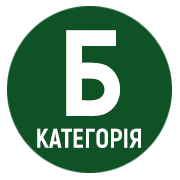STUDENTS’ CREATIVE THINKING INDICATORS IN THE SOLVING OF EXPERIMENTAL TASKS
DOI:
https://doi.org/10.32782/psy-2024-3-10Keywords:
creative thinking, uncertainty, indicators of creative thinking, perception, understanding, content analysisAbstract
The development of creative thinking as a tactical and strategic decision-making mechanism in conditions of uncertainty should be a priority task of preparing future specialists for professional activity in modern conditions. Therefore, there is a need to study the peculiarities of students’ understanding of uncertain situations and, on this basis, to develop adequate psychological and pedagogical tools for both diagnostics and the development of creative thinking of higher education applicants. In this publication, we present the fourth part of a series of studies devoted to the study of the students’ understanding of uncertain situations peculiarities. According to the results of the content analysis of the answers of higher education applicants to the fourth experimental task, the following content categories are distinguished: the desire to spoil the neighbor’s car (59%); the desire to setup a neighbor (11%); the desire to influence the mental state of a neighbor (6%); joke (5%); self-benefit (5%); a good deed (4%); false answer (3%); no response (6%). Summarizing the results of the analysis of the features of solving four experimental problems by students, the following content indicators of creative thinking have been defined: originality of the answer; adequacy to the task condition; objective/subjective orientation; orientation to knowledge/orientation to fiction (imagination); manifestations of the use of cognitive strategies; optimism/pessimism; constructiveness/ destructiveness; criticality of attitude to the condition of the task; holistic modeling of the situation. It is also necessary to take into account such formal characteristics as the number of proposed answer options, wording in the form of an assumption or statement, the presence of an explanation (brief or detailed), the presence of a description of the situation, and the addition of additional details. The results obtained can become the basis for the development of adequate psychological and pedagogical tools for both diagnostics and the development of creative thinking of higher education students in conditions of uncertainty.
References
Моляко В.О. Творча конструктологія (пролегомени). Київ : Освіта України, 2007. 368 с.
Моляко В.О., Шепельова М.В. Прояви творчого мислення при розв’язуванні студентами експериментальних ситуацій з високим ступенем невизначеності. Журнал соціальної та практичної психології. 2023. № 2. С. 24–29.
Шепельова М.В. Вплив суб’єктивних орієнтирів на розуміння студентами невизначених ситуацій. Вчені записки Таврійського національного університету імені В.І. Вернадського. Серія : Психологія. 2023. Т. 34 (73). № 1.
Шепельова М.В. Прояви творчості у розумінні студентами невизначених ситуацій. Функціонування творчого мислення в умовах інформаційної невизначеності : матеріали ХХІІІ Всеукраїнської науково-практичної конференції (30 травня 2023 року, Київ). Київ : Інститут психології імені Г.С. Костюка НАПН України, 2023. С. 123–129.
Krippendorff K. Content analysis: an introduction to its methodology. Thousand Oaks, London, New Delhi : Sage Publications, 2004. 412 p.






